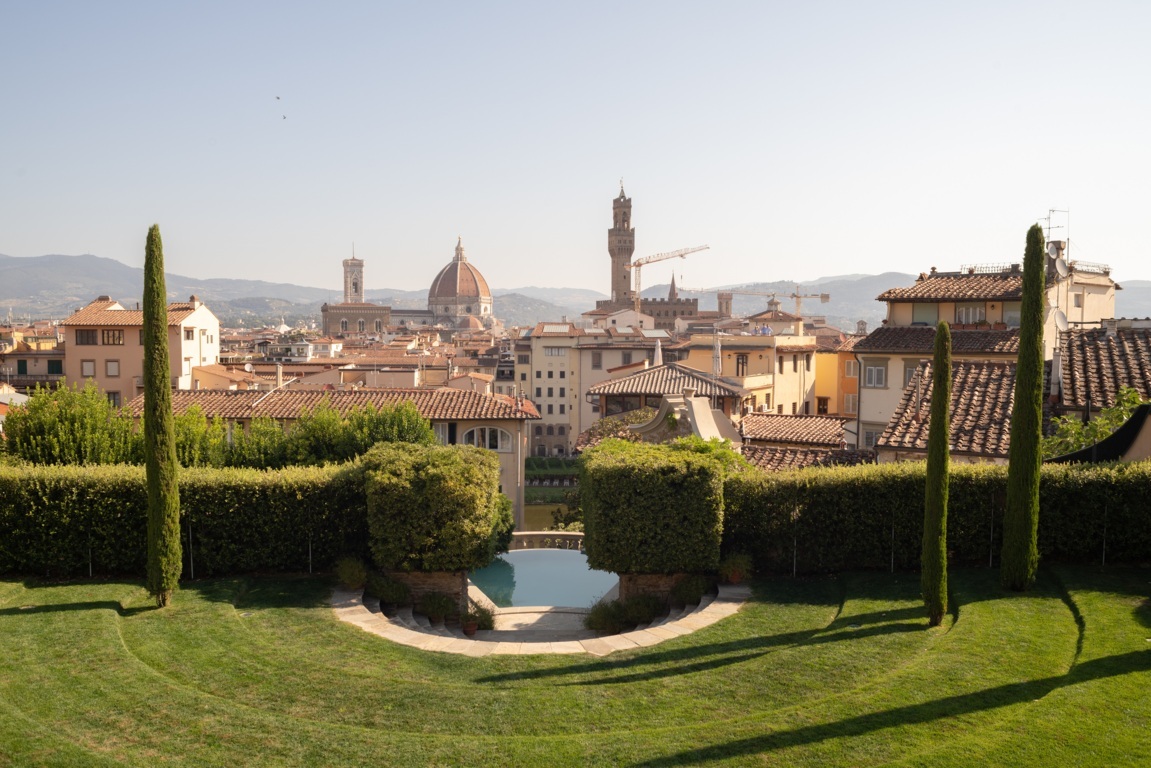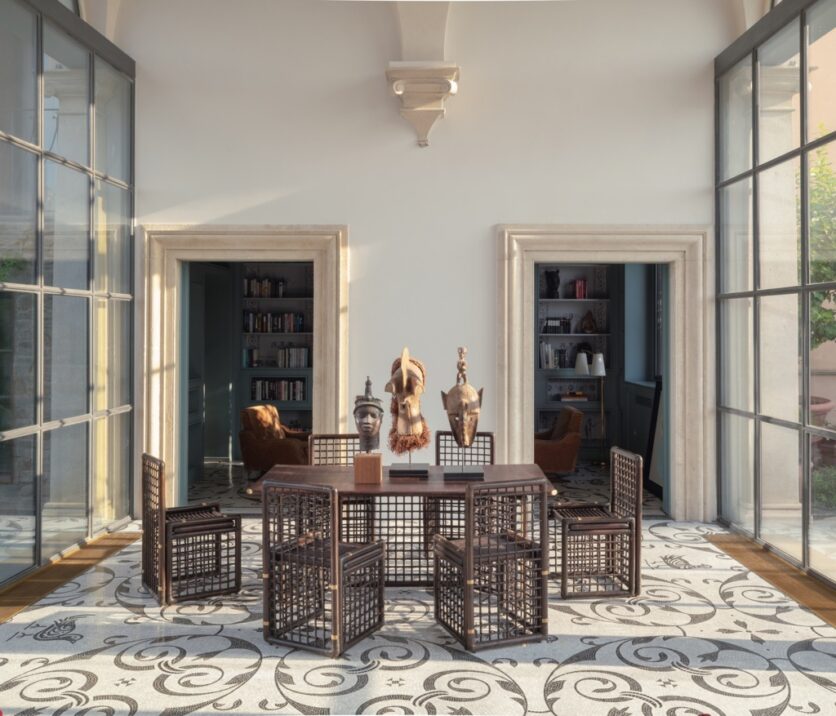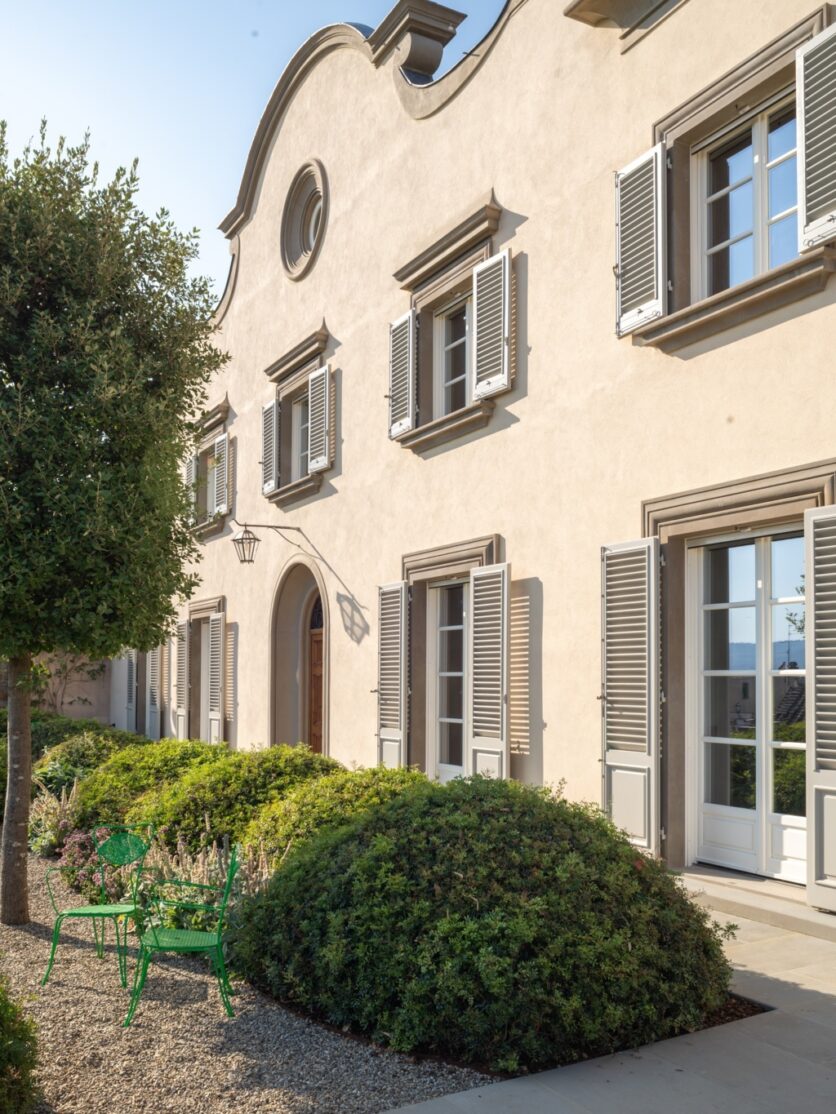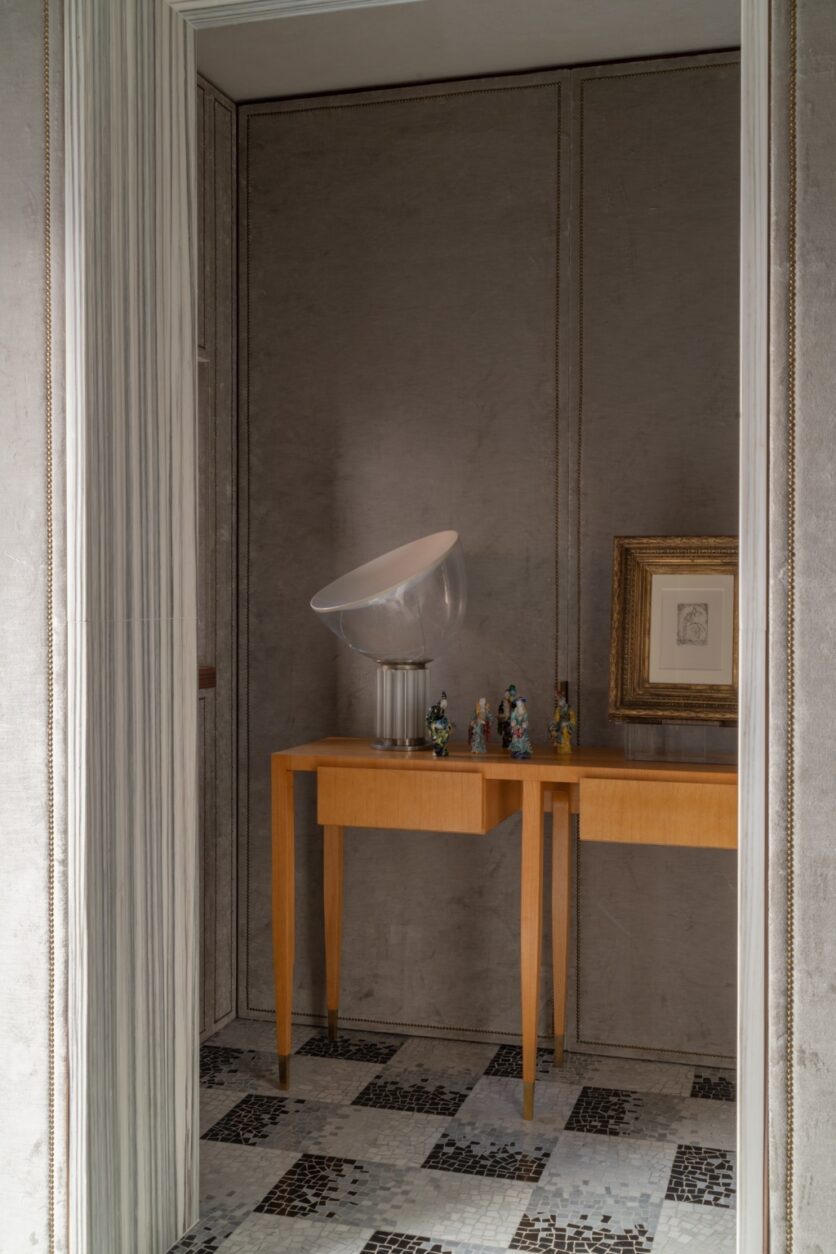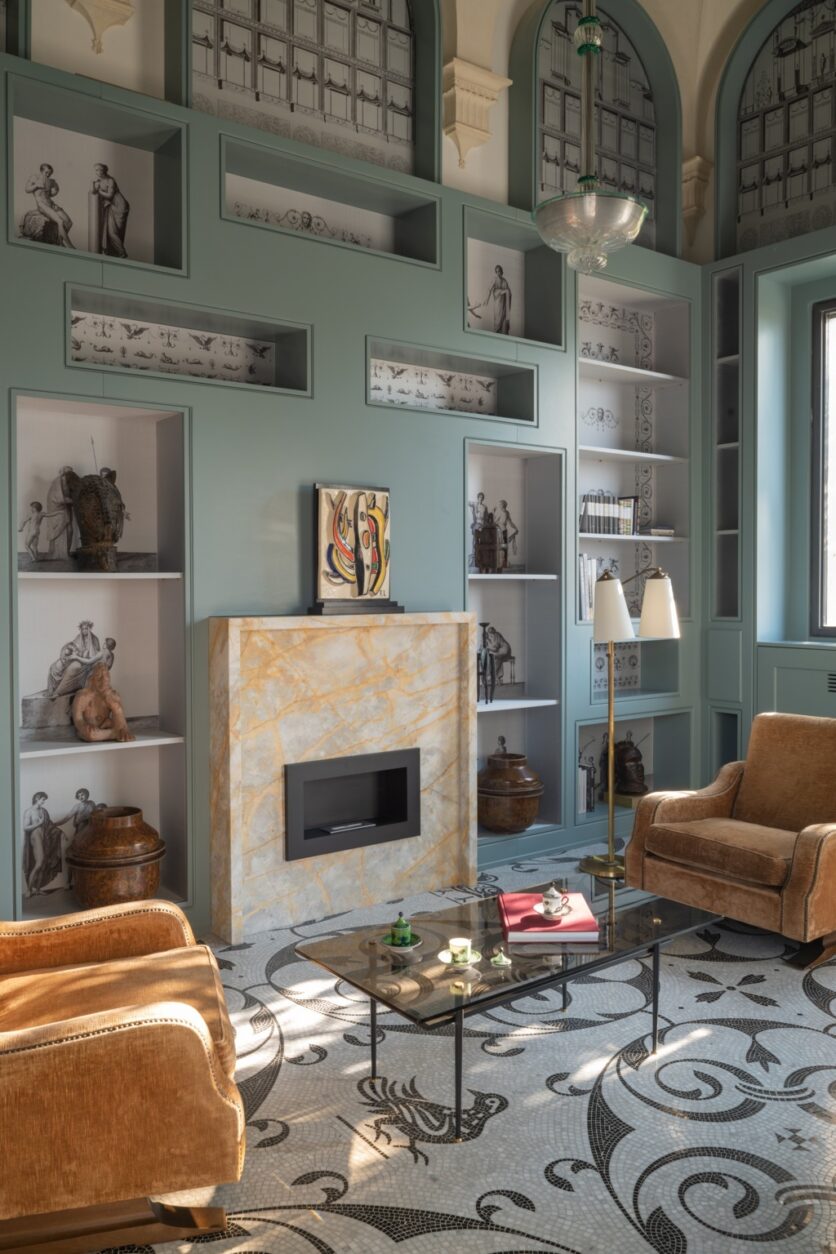Florence, a medieval tower and an ancient lemon house: this was all that characterised the property when F. Gordon and Elizabeth Morrill decided to buy it, in love with the splendid view of the Duomo and Palazzo Vecchio. The new owners commissioned the Roman architect Massimo Adario to restore the estate, enlarging it with a third building.
The recurring motif and the key to the project is the homage to Florence, which opens up to the extraordinary view from the outside, from the amphitheatre-like terraces of the garden, and which inside is recalled by the stuccoes up to the woodwork, with motifs inspired by the façades of the Porcelain Museum in Palazzo Pitti, Palazzo Fenzi or Palazzo Medici Riccardi. In order to achieve these artistic references to the Florentine tradition, the architect chose to collaborate with Friul Mosaic, thanks to whom mosaics were created in three different rooms of the house. Each mosaic was deliberately inspired on an aesthetic level by compositions that refer to different architectural periods.
Made to a design by Friul Mosaic, the floor mosaic extending from the library to the 18th-century Limonaia room is inspired by mosaics from the Roman era dating back to the 1st century B.C. and features floral motifs in the typical black and white style of the period. In the entrance lobby of the main body of the Villa is the scenic original stone staircase leading to the first floor. The mosaic floor in the lobby, designed by Friul Mosaic, follows the circularity of the space and presents a colour gradient on the grey scale, giving a sense of elegance and harmony that blends perfectly with the surrounding spaces. The mosaic in this case is inspired in tone and geometry by the Milanese mosaics of the 1920s in Ca’ Brutta.
The reference to the entrances of Milanese palaces is equally clear in the mosaic created at the entrance to the medieval tower of the Palladian villa. The project engaged Friul Mosaic, from the design to the installation of the mosaics made, allowing the architect to follow the realisation and rely on a single point of contact even during the installation phases.


